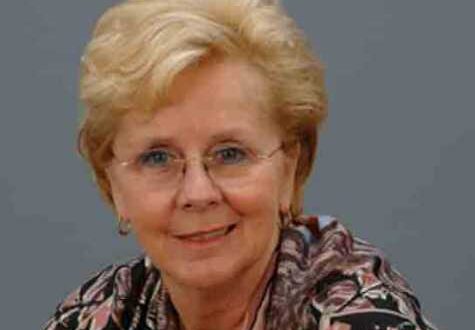
Getting Paid Starts at the Beginning of the Process: MSCRA Hosts Collision Hub for Estimating Training
“You get to decide what you want to charge and what line items to put on an estimate,” Kristen Felder of Collision Hub stated during an estimating training session, taught by Larry Montanez III of Collision Hub and hosted by the Mississippi Collision Repair Association (MSCRA). She noted, “Getting paid is part of the process that has to start at the beginning when you write your preliminary estimate.”
MSCRA Executive Director Josh Kent welcomed attendees, thanked association sponsors, and introduced the evening’s trainer. After reading the antitrust statement, Montanez examined the six steps to completing a damage report: gather information and data, look up procedures, report by keeping it in the family, disassemble vehicle for review, adjust review report, and finalize report with team.
Gathering information and data begins with learning the facts of the loss, including the weather and driving conditions, as well as taking photographs and obtaining signed paperwork. Additionally, technicians must take paint film mil thickness readings, perform pre-repair scans, and take pre-repair measurements. “Make sure your technicians know how to properly measure,” Montanez noted. “Four to eight measurements on a vehicle is unacceptable; each vehicle requires 26 to 32 measurements minimum, adding another 10 to 15 for suspension and at least 10 more if there’s front damage.”
Finally, the shop should classify the vehicle repair as fast, quick or extended. Fast repairs tend to be cosmetic, while a quick repair is something that “needs to be sent to the triage department and requires a bench measurement or quick tug to something before it gets repaired,” Montanez explained. “An extended repair is something like a frame rail or quarter panel. Once you acquire all the data, you should be able to calculate how much time the car will need to be in the shop.”
Next, research repair procedures by V.I.N, and review the OEM’s build sheet, safety precautions, post-collision inspections, and construction design, including substrates and materials. It’s also important to be familiar with the ADAS systems installed in the vehicle and any specific repair protocols as well as mechanical and electrical information.
When starting to write the report, Montanez recommends reading the p-pages, starting with t he right group and then staying in that group of operations before moving to the next logical group and adding items for group operations. Items that apply to the entire vehicle should be placed in Miscellaneous Operations, and notes should be made on operations as needed to ensure anyone on the shop’s team can discuss with a consumer or insurer. Montanez also stressed the importance of shops understanding all the features offered by their system.
Prior to disassembly, take photos of the vehicle before removing components to view hidden sustained damage. Next, check for secondary or indirect sustained damage. The goal is “to complete your damage report on the first day, as accurately as possible. Your initial damage report should basically match the final bill, other than outsourced processes which you should still be able to approximate. Doing a complete, accurate initial estimate allows you to avoid multiple supplements,” Montanez said, also suggesting that damaged components be stored in a specific area where they are ready to show to the insurer as needed.
During the adjustment process, collision repair professionals will review the damage report to doublecheck all operations and parts prices before reviewing the report with the team to make any adjustments. Save and print needed documents. Then, finalize the report with the team. “Make sure the damage assessor, foreman, parts manager, technician, and everyone who touches the car is aware of what’s going on with it. Review all operations and the repair plan to be sure they understand, and after you map the vehicle, it’s ready for the insurance inspection and parts arrival,” Montanez said, stressing, “Never start a repair order without receiving all the pertinent parts.”
Referencing a 2007 Dodge Ram which required a bedside panel replacement, Montanez compared photos of an original panel and a new panel, provided courtesy of Logan Payne from Payne & Sons in Dallas, Texas. He identified several not-included processes that must be performed, such as cleaning the work area of dirt and debris, removing adhesives and foams, and repairing adjacent panels.
Montanez went through the estimate line by line, offering efficiency tips on various processes while identifying processes that shops frequently neglect to include on their damage reports. “Just the bed panel, no blends, just changing the bed panel alone, is a $7,800 job at $50 labor rate, $30 for materials and 5% tax. But what about the same damage to a 2019 Ram?” Montanez asked.
Examining another preliminary estimate, Montanez revealed that the same repair on a 2019 model is around $400 cheaper. He also explored what happens to the 2007 estimate if the panels are blended; the repair cost increases to $10,912. The estimating class concluded with a question and answer session. Collision Hub will be hosting its 2021 World Fair and Exposition at the end of April.
For more information about MSCRA, visit https://mymscra.com/ or facebook.com/mscra1/.




